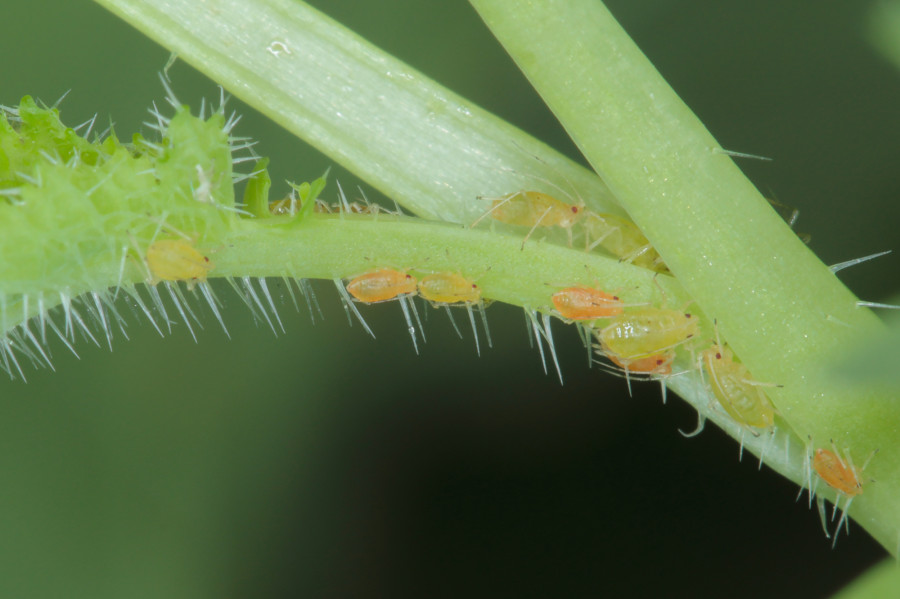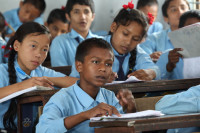Columns
The environment and pest management
Insect pests are considered to be a good indicator of human-driven climate change.
Pragya Adhikari
There is no doubt that the world is in the grip of climate change. Global climate change is arguably the worst problem that the world faces today. Our climate influences every aspect of life on this planet, from our ability to produce food and therefore our future development to the distribution of biomes and the level of biodiversity that exists in the world. Everyday, it is ballooning progressively, affecting agricultural productivity directly and indirectly via several pathways, among which plant pests are a leading cause.
According to the UN Food and Agriculture Organisation, pests are 'any species, strain and biotype of plant, animal or pathogenic agent injurious to plants and plant products'. Research shows that between 20 and 40 percent of global crop yields are reduced each year due to damage caused by pests. Insect pests are considered to be a good indicator of human-driven climate change. A rise in temperature, changes in precipitation patterns, milder and shorter winters, rising sea levels and increased incidence of extreme weather events can directly influence insects by affecting their rate of development, reproduction, distribution, migration and adaptation.
Indirect effects
In addition, indirect effects can occur through the influence of climate on the insect’s host plants, natural enemies and inter-specific interactions with other insects. For example, the main effect of temperature in temperate regions may be seen in winter survival. Non-diapausing—ones that don’t go through a phase of suspended development—frost-sensitive species and those that are able to overwinter in their active stages, such as the aphid myzus persicae, show increased winter survival in warm winters. Also, it has been estimated that with a 1-2 degrees Celsius temperature increase, insects might experience one to five additional life cycles per season (voltinism). This will also extend the distribution of species towards the poles or higher altitudes. According to one survey of about 1,600 species, about 940 of them showed effects of climate change. For instance, in Europe, 35 species of butterflies have already shifted their ranges 35-240 km northward. In California, 70 percent of 23 butterfly species now start their first flight about 24 days earlier than they used to do 31 years ago.
As with temperature, precipitation changes can impact insect pest predators, parasites, and diseases resulting in a complex dynamic. Fungal pathogens of insects are favoured by high humidity and their incidence would be increased by climate changes that lengthen periods of high humidity and reduced by those that result in drier conditions. Altered wind patterns may change the spread of both windborne pests and bacteria and fungi that are agents of crop disease. Crop-pest interactions may shift as the timing of development stages in both hosts and pests is altered.
Furthermore, elevated CO2 concentration increases food consumption by caterpillars and reproduction of aphids while it decreases insect development rates, response to alarm pheromones by aphids, parasitism and effectiveness of transgenics developed with Bacillus thuringiensis. Also, it is noted that soybean grown in elevated CO2 atmosphere had 57 percent more damage from insect than those grown in today’s atmosphere. Climate change may also indirectly affect insect herbivore, excessive heat or drought create stress on trees and lower their defence, making them less resistant to insect attack.
It is reported that global warming could cause another deleterious effect in the form of deactivation of some genes responsible for the production of volatile substances that are used by plants to attract natural enemies of herbivorous insects. For example, in cabbage, an elevated CO2 level decreased the emission of Jasmonic acid-regulated terpene volatiles that reduced the searching efficiency of the parasitoid, Cotesia plutellae.
Human activities
Global warming is one of the severe problems caused by human activities, and it can also be minimised only by human activities. The warming caused by human activities has been found to be affecting the strongest biological community of the ecosystem—insects (both pests and beneficial insects). With a booming insect pest population, global crop productivity is found to be decreasing drastically. So we need to act now to develop appropriate strategies and new innovative pest control tactics to mitigate the adverse effects of climate change which are both effective and not detrimental to the environment. An assessment of the efficacy of various integrated pest management technologies under diverse environmental conditions is needed. Integrated pest management involves a holistic approach, that is all biological, chemical, physical and cultural methods are used to keep pests below the economic injury level. It also involves teaching farmers about the judicious use of pesticides at the right time and in the right doses for controlling insect pests.
The sterile insect technique has proven to be a very effective environment-friendly tool for pest management. Reducing the amount of tillage in cropping systems can help to increase abundance and evenness of important ground-dwelling pest predators, such as spiders, ground beetles and rove beetles. Rotating crops, fertilising crops with manure, intercropping, use of resistant varieties and trap crop are found to be effective for slowing the insect pest population. Pest suppression research, strategies and technologies should be developed. The stakeholders concerned should propose regulatory approaches to create sustainable and viable crop protection systems in the framework of agro-environmental schemes.
Adhikari is a student at Agriculture and Forestry University, Rampur, Chitwan.




 10.12°C Kathmandu
10.12°C Kathmandu















